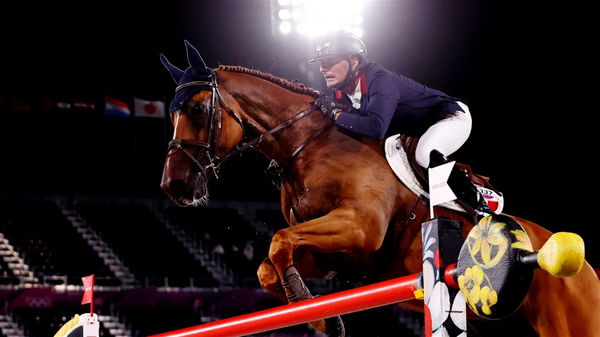

Competitive equestrian sports often dazzle with displays of grace, power, and precision, but there’s a side of the sport that rarely makes the highlight reels—what it demands from the horses. The intense training schedules and high-stakes competitions sometimes push these magnificent animals beyond their physical and mental limits, raising ethical questions.
Watch What’s Trending Now!
In recent years, mounting concerns about horse welfare have prompted calls for change, and Denmark is taking the lead. The Danish Equestrian Federation (DRF) has rolled out groundbreaking rules for 2025, addressing these issues head-on. These updates aim to not only protect horses but also set a new standard for how the sport is practiced globally. If you’ve ever wondered how rules can rewrite a sport’s legacy, Denmark’s bold move might just be the answer.
ADVERTISEMENT
Article continues below this ad
Younger, faster, better? Not anymore!
One of the most significant amendments is the adjustment of the minimum age requirement for horses competing at the Grand Prix level. Previously, horses aged eight were eligible to participate in national Intermediaire II and Grand Prix classes. Under the new equestrian regulations, only horses aged nine and above will be permitted to compete at these advanced levels.
This change allows younger horses an additional year to mature, both physically and mentally, before facing the rigors of high-level competition. The decision to raise the age limit aligns with growing concerns about the early and intensive training of young horses, which can lead to long-term health issues and shortened careers. By granting these horses more time to develop, the DRF aims to promote longevity and well-being within the sport.
ADVERTISEMENT
Article continues below this ad
In addition to age regulations, the DRF is revising equestrian equipment rules to prioritize comfort and humane treatment. For the first time, the use of nosebands in dressage will be optional. Nosebands, traditionally used to keep a horse’s mouth closed and enhance control, have been scrutinized for potential discomfort and restriction. Allowing riders to forgo nosebands offers an opportunity to adopt gentler training methods that respect the natural behaviors of horses.

ADVERTISEMENT
Article continues below this ad
Furthermore, bitless bridles, which have been advocated for their kinder approach, will now be permitted in lower-level competitions (E, D, and C levels) for both horses and ponies. This inclusion acknowledges the growing movement towards humane equipment choices and provides riders with alternatives that prioritize equine comfort.
The DRF has also implemented a restriction on spur length for pony riders, capping it at 2 cm. This seemingly minor adjustment addresses concerns about the potential for spurs to cause discomfort or injury, especially in young or inexperienced riders. By enforcing this limit, the federation aims to ensure that training aids are used responsibly and do not compromise the welfare of the animal.
Why Denmark’s equestrian welfare changes could be a game-changer globally
Denmark’s proactive stance on equine welfare reflects a broader shift within the international equestrian community. The International Equestrian Federation (FEI) has been under increasing pressure to enhance welfare standards, especially following high-profile incidents that have drawn public scrutiny. In response, the FEI has proposed several rule changes focusing on horse welfare, including stricter reporting mechanisms for abuse and comprehensive guidelines on training and equipment.
The initiatives put forth by the Danish Riding Federation (DRF) might just spark a movement among other national federations and the FEI to embrace similar changes. By raising the bar at home, Denmark is playing a big part in a worldwide discussion on how we treat horses in sports. These reforms not only safeguard the well-being of the animals but also boost the integrity and public perception of equestrian activities. It is essential to note that these changes occur when equestrian sports are closely watched.
There have been some troubling incidents related to alleged mistreatment, which have ignited debates about the future of these sports, especially in major events like the Olympics. The FEI seems to be optimistic about the sport’s continued presence in future Games as long as ongoing efforts focus on horse welfare. So, Denmark’s new rules? They’re a big deal—like a significant leap towards a more ethical and sustainable future for equestrian sports.
The DRF is tackling key issues such as age limits, the gear used, and how often competitions should happen. They’re setting an example, trying to strike that balance between winning and ensuring the horses—the true stars of the sport—are treated well. As these regulations roll out, it’s going to be super important for the global equestrian community to keep an eye on how they play out and think about adopting similar measures. The well-being of our equine athletes should always come first, right? Denmark’s forward-thinking approach might inspire a worldwide commitment to making sure that striving for excellence in equestrian sports doesn’t come at the cost of the animals we hold dear.
ADVERTISEMENT
ADVERTISEMENT
ADVERTISEMENT
ADVERTISEMENT


